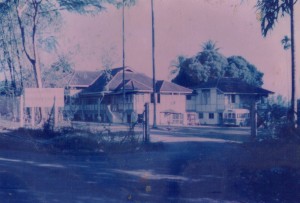A BRIEF HISTORY
The Spastic Children’s Association of Johor was formed in 1967. Having started with only eight (8) children in a borrowed premise at the Jubilee Home, today the Association has its own premise and caters to the special needs of 137 children afflicted with Cerebral Palsy (CP). The Association takes pride in being one of the first organizations in the state of Johor that provides specialised professional services for Cerebral Palsy Children.
 Persatuan Kanak-Kanak Spastik Johor (PKKSJ) is one of the organizations in Malaysia which specializes in educating, training, treating and providing special need for children afflicted with Cerebral Palsy (CP). PKKSJ was formed with the initiative and effort of Dr. Samuel Abraham, a paediatric medical consultant. In June 1967, PKKSJ was formed with a pro-term Committee consisting of representatives from Government Hospital, Department of Welfare, Department of Education, Army and Voluntary Organizations.
Persatuan Kanak-Kanak Spastik Johor (PKKSJ) is one of the organizations in Malaysia which specializes in educating, training, treating and providing special need for children afflicted with Cerebral Palsy (CP). PKKSJ was formed with the initiative and effort of Dr. Samuel Abraham, a paediatric medical consultant. In June 1967, PKKSJ was formed with a pro-term Committee consisting of representatives from Government Hospital, Department of Welfare, Department of Education, Army and Voluntary Organizations.
The aim was the eventual establishment of a day school and therapy centre for children with CP. In April 21st 1968, PKKSJ was formally registered under Registrar of Societies. In February 1968, the treatment and education of 8 children began in a borrowed room at the Jubilee Home. In 1969, the State Government permitted the use of old Government Quarters at Bukit Meldrum. Finally in 1970, the Association was provided with a permanent site at 138, Jalan Dato Menteri through the generosity of the State government. In July 1988, the Special Education School shifted to present building. It started with 3 classrooms in the morning and 3 classrooms in the afternoon with 6 teachers. Another milestone reached in 1988 is the Association’s participation, as one of the Founder members, in the National Spastic Children’s Association.
The present building for the Spastics Children’s Association of Johor was planned in early 1980’s by some founder committee members of the Association. But plans were shelved due to insufficient funds, soaring prices of building materials and the high cost of labour. In early 1985, Dr. Tibbs Fernandez, the Acting Chairman, convinced the Management Committee to go ahead with the project in order to fulfill the pledges made to the many generous donors. A Sub-Committee was immediately appointed to see to the planning and construction of the new building. Site excavation work commenced in December 1986. in March 1987, YAB Tan Sri Haji Muhyiddin B. Haji Mohd. Yassin, the Menteri Besar of Johor and the President of this Association laid the foundation stone. Construction work commenced thereafter, and Phase I at a cost of RM600,000.00 was ready for occupation in July 1988. In 1992, a proper school was build with 8 classrooms, 3 rehabilitation units with hydrotherapy pool. When Datin Paduka Hajah Rohayah binti Awang was the Chairman, with the help of the State Government and funds collected from various activities, she and her committee members were able to set up a building in 1996 with a multipurpose hall and a canteen which became a source of steady income.
The main objective of the Association is to provide special program for the development of children and young adults with Cerebral Palsy. So when Tunku Yan Nazihah bte Tunku Laxamana Nasir came in as Chairman of the Association in 2002, she and her committee, together with the dedicated staff, held many group discussions to upgrade the services further.
PATRONAGE /HONORARY PRESIDENT
Her Royal Highness Raja Zarith Sofiah binti Almarhum Sultan Idris Shah is the Royal Patron and the Menteri Besar of Johor is the Honorary President of the Association.
MANAGEMENT
An elected Board of Directors manage the Association.
FACILITIES
The Association manages a Special Education School, a Rehabilitation Department, Vocational Classes and also runs a Sheltered Workshop for those who graduate from the school at the age of 18.
EARLY INTERVENTION PROGRAMME (PRE-SCHOOL)
Children are admitted to the Early Intervention Programme upon attaining the age of five (5). In this programme, children learn mainly through play and attend regular therapy sessions. It is also at this stage when children who are academically inclined are identified.
SPECIAL EDUCATION
Children who are admitted to the Special School from this programme are separated into two categories. Those who are academically inclined are taught the mainstream curriculum while the others are taught a special curriculum tailored to suit the individual’s needs and abilities with special emphasis on functional skills. The academically inclined sit for the UPSR examinations and are transferred to the main stream schools on their success of the examinations.
REHABILITATION SERVICES
The Rehabilitation department caters to the needs of the children at the School as well as provide out-patient services to young children as early as 1 year old. While at school the children are provided regular Occupational Therapy, Physiotherapy and Speech Therapy. These children are attended to by medical consultants from the Government and Private Hospitals. These consultants plan the children’s mode of treatment and review their progress.
VOCATIONAL CLASSES
At the age of sixteen, the children are placed in Vocational classes where they are taught social and living skills together with academic work.
SHELTERED WORKSHOP
After two (2) years of vocational training they are transferred to the Sheltered Workshop where they are paid for their handicraft or do simple assembly line work. Those who are skilled may be able to find employment in the public sector while those who are unable continue in the Sheltered Workshop at the Association.
EXTRA CURRICULAR ACTIVITIES
Our children are exposed to a variety of co-curricular activities such as Scouting/Girl Guides, sports and hobbies. Those who excel in sports participate at district, state, national and international levels. Many of the young Cerebral Palsy adults have represented Malaysia at the international games like the Far East & South Pacific International Council and Paralympics.
FUNDING
The Association receives grants from the Johor State and Federal Government. However, this is only a portion of the total funds needed to finance the Association. In order to meet the shortfall, the Association raises additional funds from the public.

